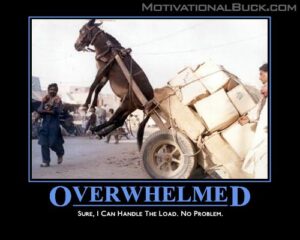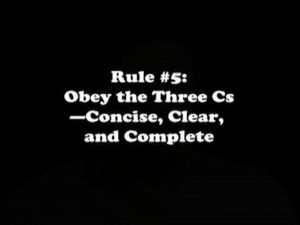Cressey Performance Internship Blog by Sam Leahey – Simplicity
Simplistic Programming
Let’s face it. There are so many aspects to Strength & Conditioning that it’s easy to be left wondering, “How am I going to fit everything in?” For a young coach, program design can be somewhat of a frustrating process. But, over time, as experience rolls in and confidence flourishes, the program design conundrum dies down. You find that there’s more than one way to skin a cat and the concept of simplicity always seems to come to the forefront. Take a look at the following list of potential program components:
Strength Training
Power Training
Movements Skills
Flexibility
Speed Development
Mobility
Anaerobic/Aerobic Conditioning
Warm Up
Stability
Soft Tissue Work
Etc. . .
Etc. . .
Admittedly, I am one of those overwhelmed ones at times, asking myself how I’m going to “fit it all in.”

However, as I noted, the K.I.S.S. principle seems to always be the end result of my analysis – KEEP IT SIMPLE, STUPID! Yet, this simple approach doesn’t seem to mesh well with having multiple training goals for one training cycle. This brings me to my main point. You don’t HAVE to have a zillion training goals for every day/week/etc. of a training period. It’s OK to focus primarily on one or two things only and hammer them home.
Maybe for Athlete A, he doesn’t need all this “fancy stuff” and instead just needs to not be as weak as his little sister. Or Athlete B for that matter, who’s “strong enough” and would greatly enhance his/her athleticism by focusing on his/her rate of force development.
Here at Cressey Performance, things like plyometric work are condensed into one or two training sessions. Speed development and movement skills are also allocated to particular training days. As the days go by, I’m seeing more and more value of consolidating program components into particular time periods instead of trying to cover all my athletic bases in the same session, month, etc. Another point being that it’s OK to let other things slide a bit while you hone in on a higher yield area. Some people may need more corrective exercise at a particular time and less strength work at the moment.
Conversely, even though it would behoove us to simplify our programming approach we must at the same time remember what Albert Einstein said – “Make everything as simple as possible, but not simpler.” This is where the Art of coaching comes in, as we find a simultaneous balance between simplifying our programs and having them still be very effective in yielding great results.
Simplistic Coaching
During my last internship, with Coach Michael Boyle, I had a coaching epiphany that helped me to realize how my explanation of exercises to large groups needed to be simple if it was going to be effective. I needed to make all my coaching cues much simpler as well. If you haven’t read that brief post before you can find it here.
At CP, I find myself in a one-on-one situation a lot more and guess what I found? The concept of simplistic explanations and coaching cues is STILL true! Who would’a thunk it?!?! I realized that just because I can spend more time with an individual doesn’t mean I need to talk his/her ear off with long lists of directions. The one client standing there in front of you still responds to the same simple explanations and demonstrations that a group of people do. The biggest difference I can find in this regard is that I might increase my initial number of coaching points to three things when explaining an exercise.

I can remember my football coach saying to me that the average human mind can only remember seven things at once. They’re already counting how many reps they’re doing as #1, and if I give 3 pointers to remember, that’s a total of four synapses. But, let’s be honest, we’ve all worked with clients who seem to “not be present in the moment;” it’s like their minds are somewhere else when you’re talking to them. So, for this reason, I’ll leave the other three synapses open for “whatever.” However, I’m very open to hearing what your suggestions are for filling in the rest of the synapses; feel free to post a comment below.
Having said all this, I’ve found there are two types of clients (as time goes on, maybe I’ll discover more): the visual learner and the verbal learner. After you’ve taken a new client through a warm-up, foam rolling, stretching, etc. you get a feel of their kinesthetic maturity. You can already tell how well they respond to being shown an exercise or being told how to do an exercise. This way, by the time you get over to the resistance training component, you have an idea of where to start – whether it’s more demonstration and less verbage or vice versa.
Has the following scenario every happened to you?
A kid or adult you’re coaching is standing there watching and listening to everything you say and do. You give full disclosure in your explanations and demonstrations. It’s now his turn to attempt the movement and he does EVERYTHING wrong! It’s like he wasn’t even listening to what you just said and for some reason your demonstrations went right through his eyes and out the apparent hole in the back of his head!
(I apologize, but you’ll have to turn your volume up because the audio quality is not that good)
So, I hope you the reader can appreciate my thoughts on the issue. For some, like my mentors Eric Cressey and Mike Boyle, this concept came into fruition many years ago. I’m glad I was able to realize the same thing while under their tutelage and not out on my own. An intern’s time here Cressey Performance is very fulfilling and the whole staff has so much to offer that there’s never a dull moment in the day.
Sam Leahey can be reached at sam.leahey@gmail.com.


